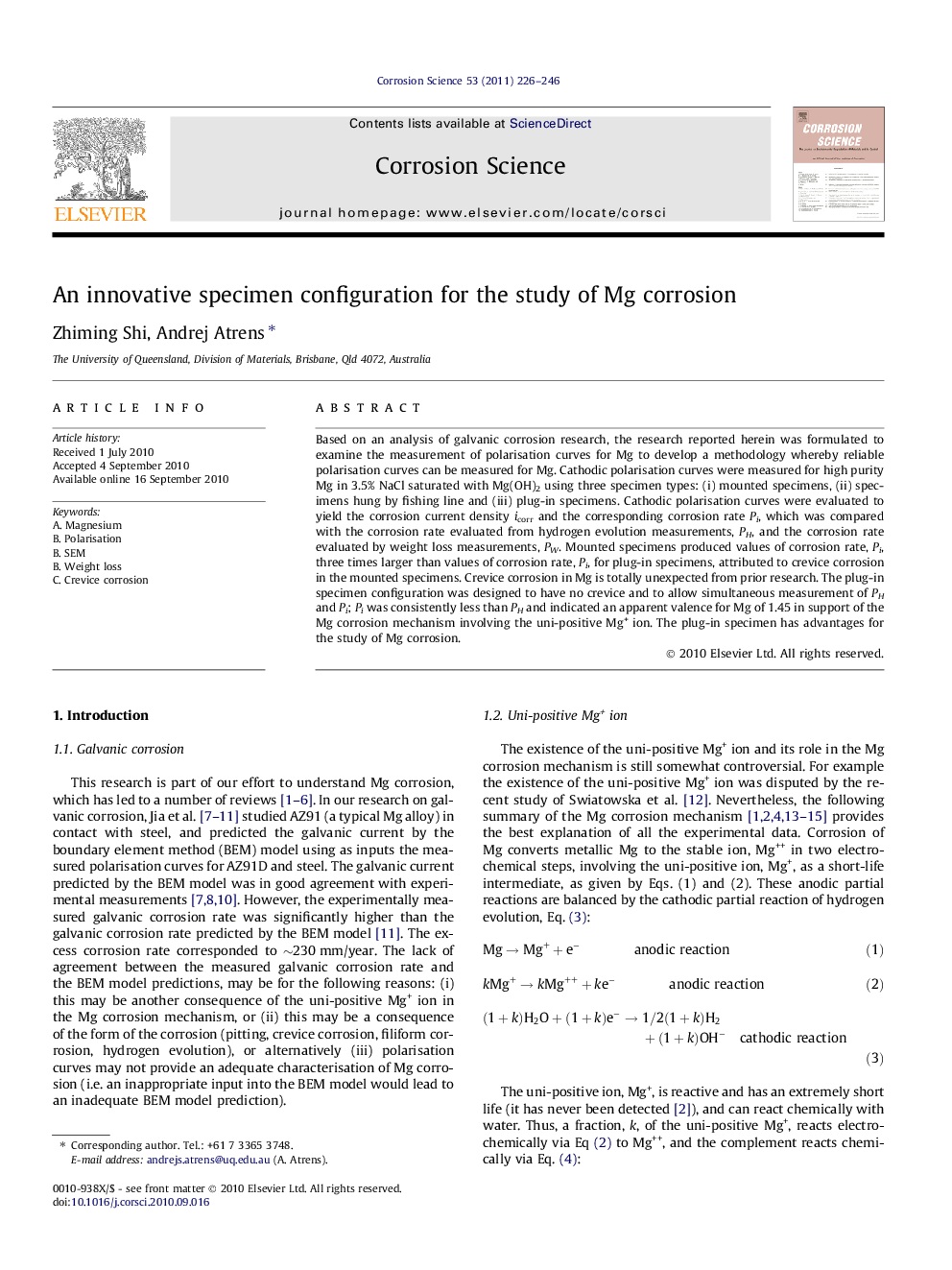| Article ID | Journal | Published Year | Pages | File Type |
|---|---|---|---|---|
| 1469830 | Corrosion Science | 2011 | 21 Pages |
Based on an analysis of galvanic corrosion research, the research reported herein was formulated to examine the measurement of polarisation curves for Mg to develop a methodology whereby reliable polarisation curves can be measured for Mg. Cathodic polarisation curves were measured for high purity Mg in 3.5% NaCl saturated with Mg(OH)2 using three specimen types: (i) mounted specimens, (ii) specimens hung by fishing line and (iii) plug-in specimens. Cathodic polarisation curves were evaluated to yield the corrosion current density icorr and the corresponding corrosion rate Pi, which was compared with the corrosion rate evaluated from hydrogen evolution measurements, PH, and the corrosion rate evaluated by weight loss measurements, PW. Mounted specimens produced values of corrosion rate, Pi, three times larger than values of corrosion rate, Pi, for plug-in specimens, attributed to crevice corrosion in the mounted specimens. Crevice corrosion in Mg is totally unexpected from prior research. The plug-in specimen configuration was designed to have no crevice and to allow simultaneous measurement of PH and Pi; Pi was consistently less than PH and indicated an apparent valence for Mg of 1.45 in support of the Mg corrosion mechanism involving the uni-positive Mg+ ion. The plug-in specimen has advantages for the study of Mg corrosion.
Research highlights► There was crevice corrosion, despite the fact that crevice corrosion is totally unexpected for Mg from prior research. ► The inherent variability implies that it is not possible to measure corrosion rates for high purity Mg with an accuracy greater than a factor 2 in solutions similar to that used herein. ► There was excellent agreement between corrosion rates evaluated by weight loss and evaluated from hydrogen evolution. ► The corrosion rate measured by hydrogen evolution using plug-in specimens was consistently greater than the corrosion rate simultaneously estimated from the polarisation curve and indicated that the apparent Mg valence was 1.45.
